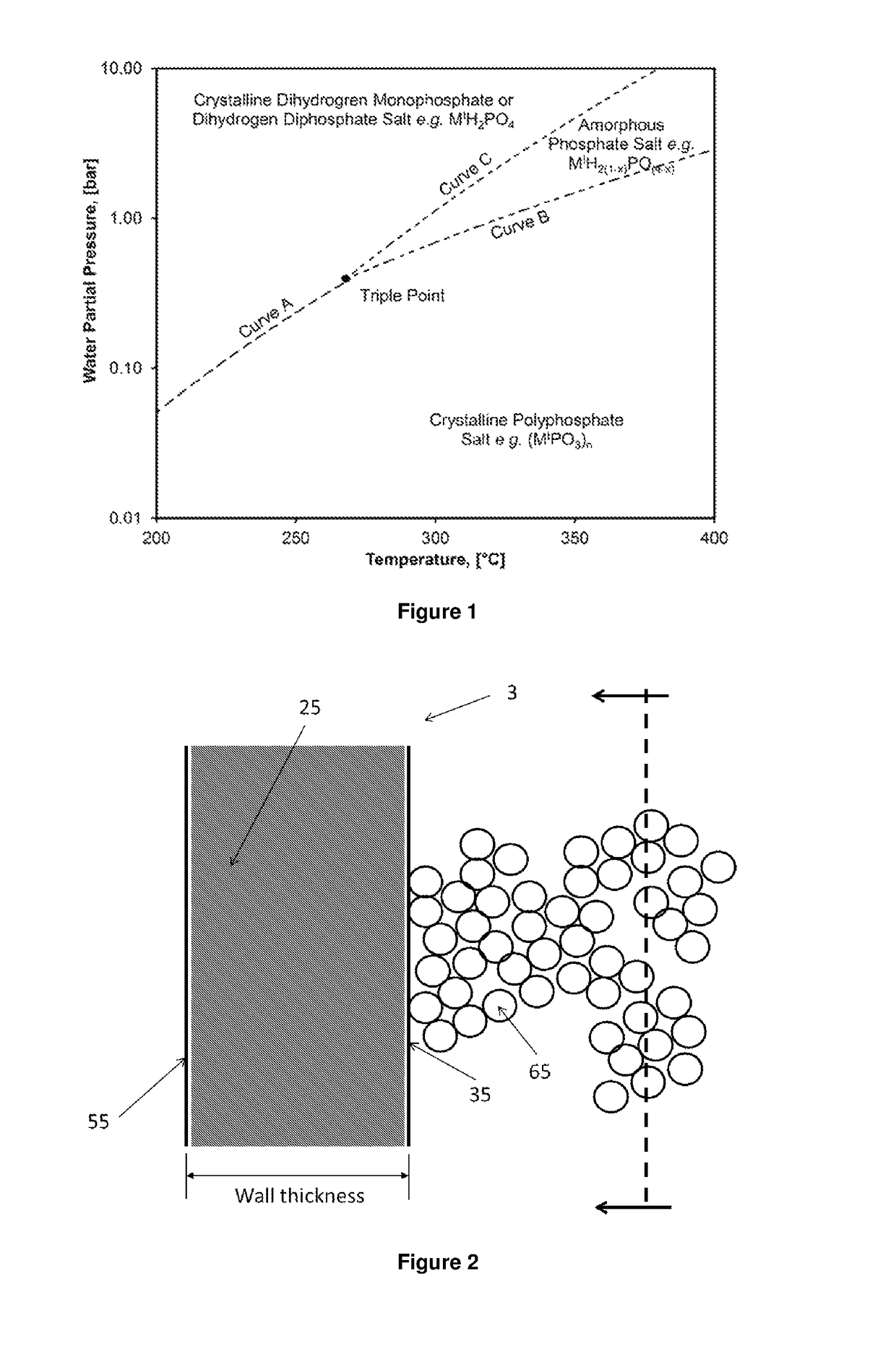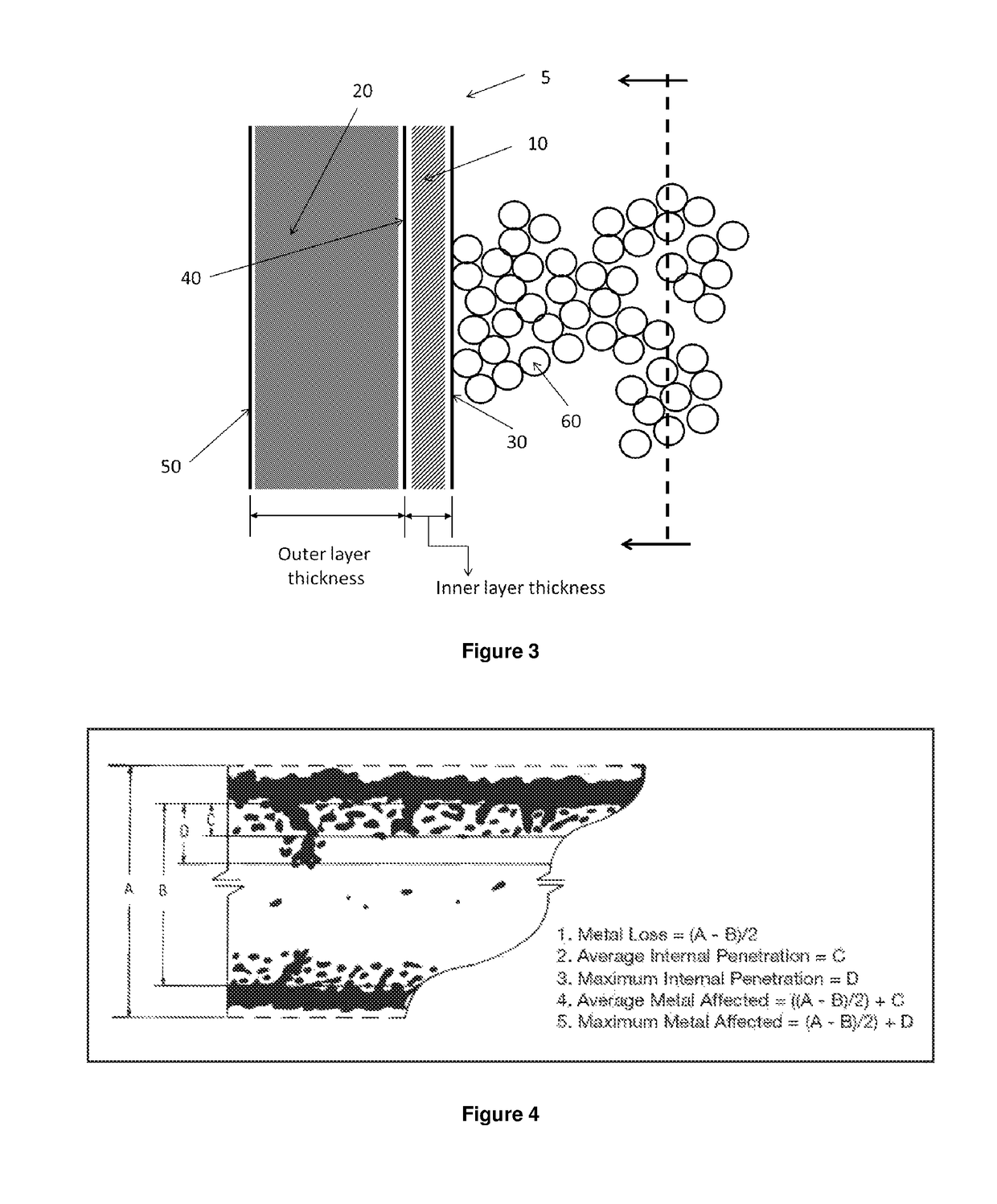Method of making acrylic acid from hydroxypropionic acid
a technology of hydroxypropionic acid and acrylic acid, which is applied in the preparation of carboxylic compounds, physical/chemical process catalysts, carbonyl compounds, etc., can solve the problems of premature and rapid deactivation of catalysts, non-renewable fossil resources, and increased amounts of side products
- Summary
- Abstract
- Description
- Claims
- Application Information
AI Technical Summary
Benefits of technology
Problems solved by technology
Method used
Image
Examples
example 2 — 20
Example 2—20 wt % Lactic Acid Aqueous Solution
[0248]455 g of an 88 wt % L-lactic acid solution (Corbion Purac Co., Lenexa, Kans.) was diluted with 1,508 g of water. The diluted solution was heated to 95° C. and held at that temperature with stirring for about 12 hours. Then, the solution was cooled to room temperature, and its lactic acid monomer concentration was measured by an Agilent 1100 HPLC system (Agilent Technologies, Inc., Santa Clara, Calif.) equipped with a DAD detector and an Atlantis T3 column (Waters Corp., Milford, Mass.; Catalog #186003748) using methods generally known by those having ordinary skill in the art to yield a 20 wt % L-lactic acid aqueous solution and essentially free of oligomers.
example 3
f Precursor Catalyst
[0249]A stainless steel glass-lined tube reactor (SGE Analytical Science Pty Ltd., Ringwood, Australia; P / N: 08277028) with 12.7 mm (½ in.) OD, 9.5 mm ID, and 60 cm length was packed in 3 zones as follows: 1) bottom zone: 0.4 g of quartz wool, 24.1 g of 4-20 mesh fused silica (Sigma-Aldrich Co., St. Louis, Mo.; catalog #342831), and 0.2 g quartz wool were packed to give a bottom zone length of 30.5 cm (12 in.); 2) middle zone / dehydration zone: 8.81 g of the precursor catalyst prepared in Example 1 were packed to give a catalyst bed length of 10.2 cm (4 in.; 7.2 mL catalyst bed volume); and 3) top zone / evaporator zone: 0.1 g of quartz wool was placed on top of the dehydration zone followed by 3.6 g of fused silica (4-20 mesh) to give an evaporator zone of 5.1 cm (2 in.) in length.
[0250]The reactor was first placed inside an aluminum block and then placed in a Series 3210 clam shell furnace (Applied Test Systems, Butler, Pa.) such as the top of the evaporator zone ...
example 6
ted HAYNES® 214® Alloy Coupon
[0260]A HAYNES® 214® alloy coupon (Haynes International Inc., Kokomo, Ind.) was sanded with emery cloth (320 grit, followed by 500 grit), cleaned with solvent (acetone, hexanes, and then chloroform) and heat treated (i.e., oxidized) in a muffle furnace (1 h at 600° C., followed by 1 h at 1000° C.; Wilt Industries Inc., Lake Pleasant, N.Y.) before use. The dimensions of the coupon were measured using a micrometer as 30.38 mm×7.97 mm×1.48 mm, and the weight of coupon was measured as 2,768.44 mg before being placed in the reactor. The nominal chemical composition of this alloy includes about 75 wt % nickel, about 16 wt % chromium, about 3 wt % iron, and about 4.5 wt % aluminum. The heat treatment of the coupon (i.e., the oxidation occurred before the dehydration) aimed at oxidizing the aluminum included in the alloy and forming an oxide-based surface passivating layer comprising alumina.
PUM
| Property | Measurement | Unit |
|---|---|---|
| water partial pressure | aaaaa | aaaaa |
| corrosion rate | aaaaa | aaaaa |
| corrosion rate | aaaaa | aaaaa |
Abstract
Description
Claims
Application Information
 Login to View More
Login to View More - R&D
- Intellectual Property
- Life Sciences
- Materials
- Tech Scout
- Unparalleled Data Quality
- Higher Quality Content
- 60% Fewer Hallucinations
Browse by: Latest US Patents, China's latest patents, Technical Efficacy Thesaurus, Application Domain, Technology Topic, Popular Technical Reports.
© 2025 PatSnap. All rights reserved.Legal|Privacy policy|Modern Slavery Act Transparency Statement|Sitemap|About US| Contact US: help@patsnap.com



